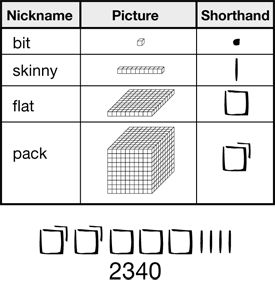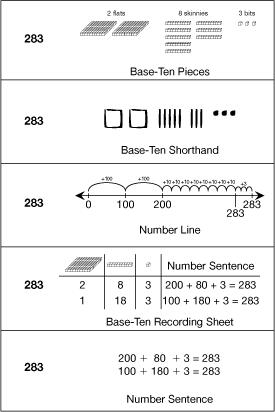This lesson extends the work of Lessons 1 and 2 to four-digit numbers. By working with a full set of base-ten pieces—representing ones, tens, hundreds, and thousands—students reinforce and extend place value concepts necessary for developing efficient procedures for computation.
Content in this Lesson
- Representing numbers (to the thousands) using base-ten pieces, words, and symbols [E1].
- Composing and decomposing numbers using ones, tens, hundreds, and thousands [E2].
- Showing different partitions of numbers using base-ten pieces and number sentences [E3].
- Recognizing that different partitions of a number have the same total (e.g., 1000 + 200 + 30 + 5 = 1000 + 100 + 130 + 5) [E4].
- Reading and writing large numbers (to the thousands) [E5].
- Connecting base-ten partitions of a number to place value.
- Choosing good tools and an efficient strategy for solving the problem [MPE2].
- Communicating solution strategies [MPE5].
- Using labels to show what numbers mean [MPE6].
Assessment in this Lesson
| Assessment | Expectation Assessed | Math Practices Expectation Assessed |
|---|---|---|
|
How Many Chocos? |
|
|
|
DPP Item H |
|





















